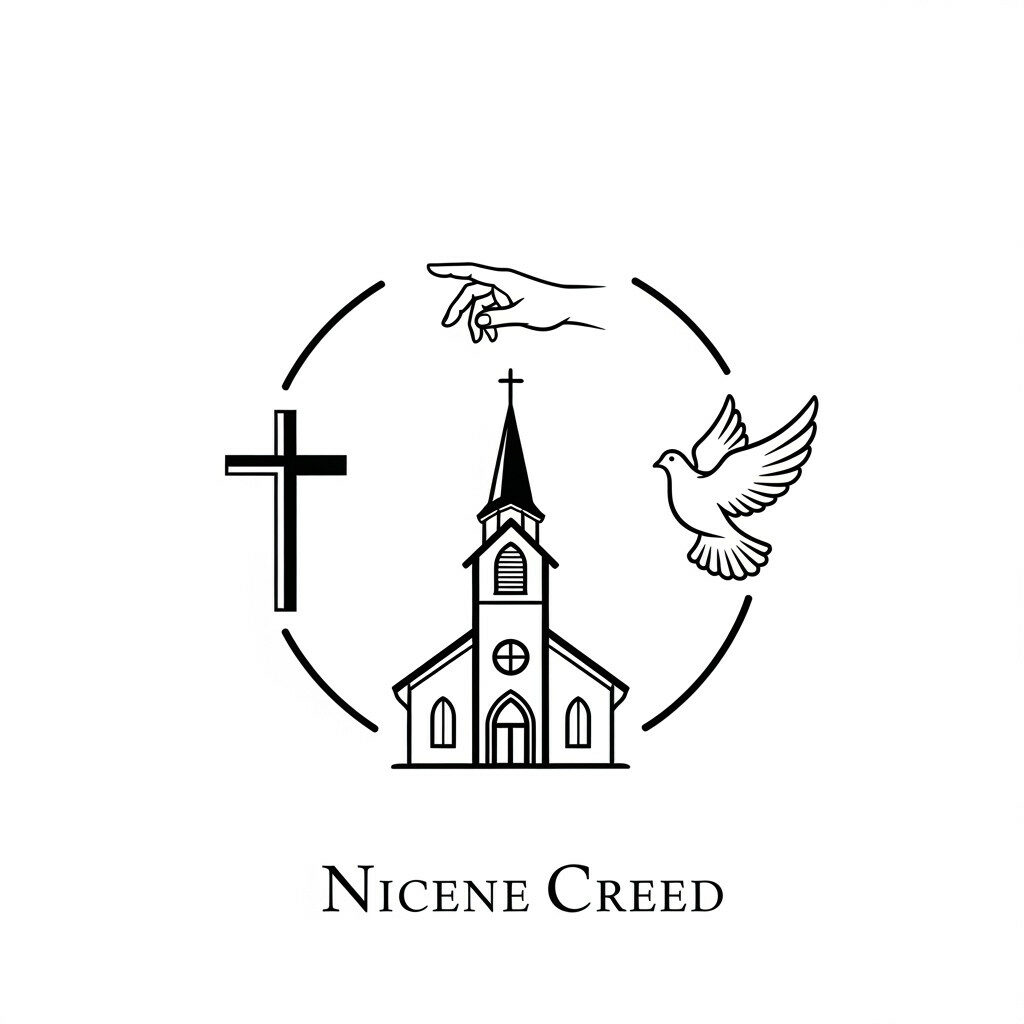Making the sign of the cross? “Oh no!” we say, “That’s Catholic.” Or perhaps: “…that’s superstitious.” Whatever it is, it is definitely not Lutheran. Or is it? Let’s take a closer look. In his small catechism, Dr Martin Luther gives instructions on how to pray and includes his morning and evening prayers as sample prayers. And as a heading for each, Luther writes: “In the morning when you get up, make the sign of the holy cross and say: In the name of the Father and of the + Son and of the Holy Spirit. Amen. Then, kneeling or standing, repeat the Creed and the Lord’s Prayer. If you choose, you may also say this little prayer”, and then follows the prayer that we know as the morning blessing. According to Luther, morning and evening prayers also include praying the Lord’s Prayer and the Creed – and the sign of the cross.
What’s that all about? Isn’t it strange that Christians so often use the cross as a symbol, when the cross was the instrument of execution of the Saviour? Who wears an electric chair or a gallows noose as a piece of jewellery on their necklace? The fact that we Christians use the cross as a sign of our identity goes back to the Holy Scriptures. The Romans considered the cross to be the most shameful method of execution there was. For the Jews too, death on a cross or even just hanging on a wooden stake was not only a scandal, but also a curse and a sign of impurity. Deuteronomy 21:22ff: “If anyone has committed a sin worthy of death and is put to death and is hanged on a tree, his body shall not remain on the tree overnight, but you shall bury him that day, for a hanged man is cursed by God”. The cross was therefore probably not the first symbol chosen by Christians – we think of the sign of the fish, for example – but despite the scandal, the cross became established early on as a sign of redemption from the curse. For this is what the Holy Scriptures say: “But Christ redeemed us from the curse of the law when he became a curse for us, for it is written: ‘Cursed is everyone who hangs on a tree’.” Precisely because the Lord Jesus Christ died on the cross as a cursed man, he redeemed us from the curse of the law and made us blessed. The cross therefore becomes an image of liberation from the curse. The letter to the Romans clearly emphasises that in our baptism we are not only baptised into Christ Jesus, but into his death on the cross; on the cross my old Adam dies with Jesus, so that the cross becomes a sign of victory for me, because precisely through it I share in Christ’s resurrection and life and in his victory over all the powers of darkness, death and the devil.
Many Christians became fond of the sign of the cross early on. As early as the 1st century AD, Christians reported that they blessed themselves with the sign of the cross; at the end of the 2nd century AD, the church father Tertullian wrote: “At every step and every movement, at every entrance and exit, when we put on our clothes and shoes, when we bathe, when we sit at the table, when we light the lamps, on the bench, on the seat, in all the ordinary actions of daily life, we make the sign on the forehead.” He later explains this in more detail: “We Christians wear out our foreheads with the sign of the cross.” This means that lay people in the early church also made the sign of the cross, and this has stood the test of time.
Let us remember that the Lutheran Church was founded, not because a new, anti-Catholic church was to be founded, but because Lutherans wanted to maintain the good things that had always and everywhere been taught and practiced by Christians. Luther also considered the sign of the cross to be a good Christian practice.
But isn’t the sign of the cross also made as a superstitious practice? Answer: Yes, some people make the sign of the cross as supposed protection against all kinds of evil forces, e.g. at the sight of black cats to ward off bad luck. Why are Christians still allowed to make the sign of the cross? Answer: Because the misuse of a thing does not negate its right use. For example, if people become addicted to drugs such as morphine, this does not mean that these drugs can no longer be used correctly and for good. If someone crashes their car into a crowd of people and kills many people as a result, this does not mean that no one is allowed to drive a car anymore. It is the same with the sign of the cross: just because some people misuse it doesn’t mean that it no longer has a proper use.
Of course, no one is forced to make the sign of the cross. But it has a good and correct use that can serve us as a blessing. One can make the sign of the cross on the upper part of the body with the hand from right to left and from the forehead to the chest; or one can make it on the forehead or over the heart as the early Christians did. This also reminds us of our baptism, where the sign of the cross was first made on our forehead and over our heart. The cross of Jesus Christ may be foolishness to many people, but to us it is the power of God. Through his cross, the Lord blesses my thinking and my whole self, my mouth and all my actions; through the cross and resurrection of Jesus, I am united with God, a new creature in baptism, with a new identity and a new community that lasts forever, a part of the family of God. In the church service, I make the sign of the cross best when the pastor does it, namely when the name of the triune God is mentioned, when sin is forgiven, when the presence of the Lord is pronounced, after receiving communion and after the blessing. And at home I do it during devotions, when I get up and when I go to bed, when I commit myself to God.



